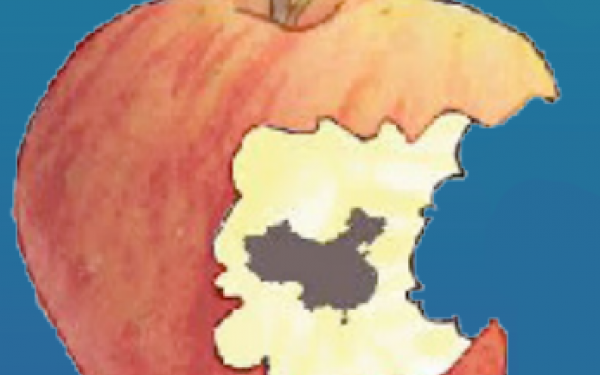Where Does Your Recycling Go?
The Journey of a Recycled Object
Do you ever wonder where your recycling goes after it gets picked up?
It’s actually a fairly complicated journey. Quebec sells most of its processed recycling, approximately 60 per cent of it. The rest is used within the province. Up until recently, most of the exported material went to China.
China had been the choice importer because of its low standard for contamination—those coffee stains on your newspapers, and things like that. In Quebec, contamination is a problem. The stuff Montrealers put out as recycling is, on average, 15 per cent non-recyclable due to this contamination.
Contaminated recycling is difficult to process and sell—and when it does sell, it goes for a lower price. A low return leads to overworked processing plants without enough money to maintain their equipment. Under-maintained equipment leads to poor processing. Cycled and recycled.
These were the conditions before the event that lead to what many are calling a crisis.
On January 1, China implemented a new quality standard. Quebec’s recycling, which begins with 15 per cent contamination, can only be exported if purified to a contamination level under 1 per cent.
That level of purity is unattainable for many sorting centres. To better understand the sorting process, let’s roleplay for a moment.
Imagine you are a magazine, the latest issue of The Link, for example. You’re being read by your real-life crush. They ogle at your beautiful header and impressive body paragraphs. After your encounter, they drop you off at your new home, the recycling bin.
It’s relatively cozy, you’re happy to not be in the trash. You have lots of roommates. You become great friends with Plastic Bag and Coffee Cup.
Collection day arrives. You and your roommates are thrown into the back of a recycling truck, which belongs to a contracted company chosen by your crush’s municipality. The truck brings you to a sorting centre, where you’ll be closely inspected, sorted, bundled, and—hopefully—sold.
If you’re reading this article with a friend, feel free to include them in the roleplay as the sorting centre.
After your ride, you’re placed on a crowded conveyor belt. Luckily, you’re able to find your friend Coffee Cup. You ask her if she’s seen Plastic Bag. She tells you Plastic Bag was caught in a gust of air, and was blown into the workings of a sorting machine.
Many of Montreal’s processing plants are unable to properly process certain plastics, like your friend Plastic Bag. Thin plastics can damage machinery. With misty eyes, you and Coffee Cup continue on.
If you are sorted properly, you and Coffee Cup will be seperated too. She is lined with polyethylene, a common, non-recyclable plastic. Her manufacturers put it there to prevent leaking when she held the coffee your crush ordered on that date with Étienne. Sorry.
Coffee cups are often tossed in with recycling. It’s an easy mistake, cups may even advertise that they are recyclable, or made from recycled material. The paper part of the cups may be recyclable, but the lining and lids are not processable by all plants.
Proper recycling education is accessible online and through public information sessions, originally scheduled by former Montreal mayor Denis Coderre, in a plan he co-authored to increase recycling by approximately 20 per cent nearly three years ago. As of the most recent available report, the city’s recycling output has increased by 0.3 per cent since 2012, according to The Gazette.
Lucky for you, you and Coffee Cup (without her lid) end up being sorted into paper recycling bales. In these bales, you sit with lots of cardboard, paper packaging, and newspapers. This is a great opportunity for The Link contributors to rub shoulders with freelancers from The Gazette and La Presse.
Unlucky for you, paper can only sit in outdoor storage for a limited amount of time. Weather and moisture can break down paper until it is no longer recyclable. Large amounts of otherwise recyclable paper can end up in a landfill if it cannot be exported.
You’ll be waiting in the Montreal Sorting Centre under the management of Gilbert Derocher. His plant, According to report by Radio-Canada, has accumulated approximately 6,000 bales since August of 2017. Those bales would have been sold to China. Durocher said he was able to find other buyers in Asia.
The government of Quebec recognizes the problem, and has invested $3 million into sorting centres across the province with the objective of raising the standard of purity.
It should be said that tighter Chinese regulations are environmentally proactive. Investment in Quebec’s recycling should also improve the province’s internal use of its own product.
Because it is unclear how long it will take to regain stability, you can feel free to continue your roleplay of sitting in open-air storage for as long as you like.


_600_375_90_s_c1.jpg)


_600_375_90_s_c1.JPG)